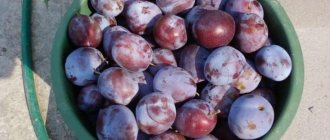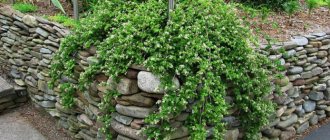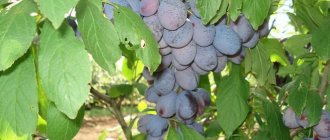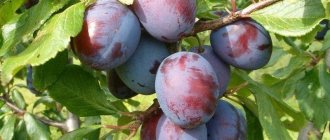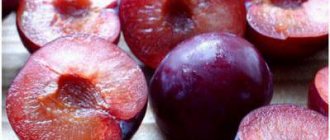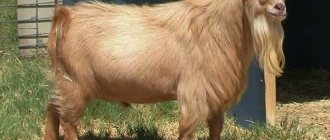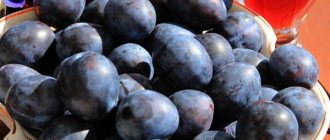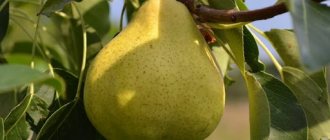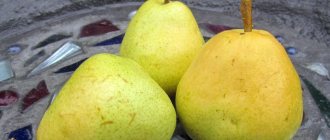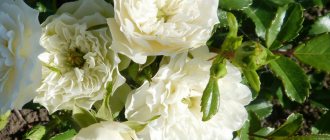Firefly is a species of plum tree with yellow fruit. This is a very popular variety, which is characterized by a large number of positive qualities. It is easy to care for, has a high yield of large, tasty drupes, is frost-resistant and resistant to various diseases.
History of the variety's creation
There are a huge number of varieties of homemade plums. They are the result of the work of breeders who, using hybridization, create new species of a given plant. Work to improve this culture continues today.
Plum Firefly is the creation of employees from the Research Institute of Horticulture named after I.V. Michurin. The authorship belongs to the talented breeders L.E. Kursakova, G.A. Kursakov, R.E. Bogdanov and G.G. Nikiforova. The variety was obtained by crossing Eurasia-21 and Volga Beauty. Its description appeared in the State Register in 2012.
The culture has been known to gardeners for a long time. But it was transferred to the State variety testing only in 2004.
The fruit tree is zoned in the Central Black Earth region, where it was created (the Michurin Research Institute is located in Michurinsk, Tambov region). However, due to its high frost resistance, it can also be grown in more northern regions.
Features of fruiting
An adult plum of the Firefly variety is a five-meter tree with a raised oval crown of medium density. Straight thin shoots of a brownish-brownish color are slightly pubescent, dark green ellipsoidal leaves curl slightly along the central vein. The flowers are white, medium size. The fruits are large, weighing 30–40 g, sweet with slight sourness, universal use. Under a thin yellow skin with a slight waxy coating lies yellow, moderately juicy pulp, from which a small stone is easily separated. Harvest in late July - early August.
To guarantee annual harvests, you need to plant pollinating plum trees nearby. The firefly is planted on the site in the spring, having thoroughly filled the planting hole with humus, phosphates and potassium salt, and added wood ash. The place should be sunny, the soil should be breathable and neutral acidity, the groundwater should be deep. When planting a garden, leave 3 m between trees, and 4 m between rows.
From the very first year, formative pruning begins, and sanitary pruning is carried out annually. A young tree needs to be watered frequently, not allowing the soil to dry out. After planting, the root collar should remain above ground level, the trunk circle should be mulched after abundant watering.
Fruiting will be annual and rich if the tree has enough nutrients and moisture.
An adult tree is watered three times - before flowering, during the formation of ovaries and in the fall. The fertilizers applied during planting will be enough for the first few years, and then annually in the fall, potassium-phosphorus fertilizers are applied when digging the trunk circle, and organic matter is used after 3 years.
Description of the Memory of the Warrior apple tree variety, fruit characteristics and disease resistance
The tree trunk circle is cleared of everything, mulched with humus, compost, and grass clippings from young trees. Experienced gardeners recommend sowing grass under mature trees and constantly mowing it, and leaving the mowed grass as mulch. In autumn and spring it is advisable to whiten the trunk. There is no need to cover trees for the winter, but snow should be trampled down around young seedlings so that mice do not make their nests there.
Main characteristics
The plum variety Firefly is a tall tree that can reach 5 m. The crown is spreading and elliptical in shape. The branches are straight, red-brown. Covered with sparse villi.
The foliage is small in size, elongated, with small jagged edges. Smooth, dense, traditional dark green color. In spring, leaves appear before or during flowering.
If the plant's leaves turn light, it means it doesn't have enough sun or nutrients.
Flowering begins in late April - early May, and lasts up to 2 weeks (depending on weather conditions). The flowers are white, located on bouquet branches and spurs.
The culture is highly frost-resistant, tolerates drought well and has strong immunity. Resists many fungal diseases that often affect fruit trees. However, to prevent the development of diseases and reduce the likelihood of pests, it is necessary not to over-moisten the soil around the tree trunk, remove weeds in a timely manner and destroy affected leaves, hearths and shoots.
Plum Firefly: variety description and characteristics
Plum Firefly: photo
The yellow plum Firefly has virtually no disadvantages; it is a beautiful, attractive variety that can easily withstand frost. Even beginners can grow it in their greenhouses.
Tree
The Firefly plum tree is tall, about five meters in size, the crown is spreading, round and elongated in shape. The branches are brown with a wine tint, slightly fleecy, thin and straight.
The leaves are small, elongated, even, dark green in color. The edges are slightly ribbed. The foliage is smooth, not rough, dense.
The stipules are medium-sized and fly from the tree early. The cuttings are also small. Inflorescences of snow-white color.
Fruit
The plum fruit of the Firefly variety is large in size, round in shape, weighing about forty grams. The color of the fruit is light yellow, with a green tint. There is a small layer of plaque. The bone can be pulled out easily. The fruit is juicy, sweet with a hint of sourness, and has a delicious smell.
In terms of taste, the Svetlyachok plum variety was given four and a half points. The composition of the fruit: sugar - about thirteen percent, acidity - one percent, dry elements from fourteen and a half percent, ascorbine - six milligrams per hundred grams.
For a good harvest, you need to know everything about plums.
Resistance to cold season and drought
The yellow plum variety Firefly tolerates cold seasons as well as heat. Maximum frost tolerance up to minus twenty degrees. young shrubs are not strong enough to withstand severe frosts, so they are insulated for the winter.
Also, the Firefly plum variety is drought-resistant, but it is also worth keeping an eye on, and you can do one irrigation for ten or twelve days. When watering, make sure that there is no stagnation in the ground, otherwise the roots may begin to rot, and then the crop may become sick.
Disease and rodent tolerance
As we already know, the Firefly plum calmly tolerates a large number of common diseases and is also resistant to pests, so this plum is often grown for commercial purposes on a large scale. If you properly care for the vegetation, then it is not afraid of any diseases. Aphids are what infects the tree in most cases. Thus, the plant must be protected from insects with the utmost precision; ants also participate in the attack.
What kind of fruiting does this variety have?
The Firefly plum variety cannot produce fruit on its own, so for its yield it is necessary to plant neighboring crops for pollination. The vegetation in the neighborhood should bloom and ripen at the same time as the Firefly variety.
Plum Firefly: pollinators
Crops - pollinators for the Firefly plum, which can be planted in the neighborhood:
- Renklod is productive;
- Lighthouse;
- Collective farm farmhouse.
Remember! The distance between them should be three meters. with such cultivation, the yield from one tree will be equal to twenty kilograms.
Inflorescence, amount of harvest
The plum inflorescence of the Firefly variety occurs at the end of spring. Fruiting occurs three or four years after planting. It bears fruit for ten or fifteen years and lives for about twenty-five years.
The plum variety Firefly bears fruit regularly, every year. In industrial gardens, workers collect about one hundred and twelve centners from one hectare of land.
Productivity
The fruit is consumed both fresh and boiled. They prepare compotes, preserves, jams, jams, and also add them to desserts. Withstands transportation without losing its attractive appearance. For commercial purposes it occupies the most honorable places.
Description of fruits
The variety is early ripening and large-fruited. Drupes ripen by the end of July - beginning of August. They have a round shape, and the average weight reaches 40 g. The peduncle is thin and easily detached from the branches.
The color of the fruit is yellow with a greenish tint. The skin is thin and smooth, with a slight waxy coating that wipes off well. When eating, the skin is almost invisible. Inside there is a relatively small stone that is easily separated from the pulp.
The plum pulp is yellow, dense, slightly fibrous, juicy. The juice is light, almost transparent. The taste is sweet with a slight sourness and a pleasant delicate aroma. The sugar level is 8.5% and free acids are 0.99%. According to the description of professional tasters, the taste is rated 4.4 points on a five-point scale.
Fruits contain many useful substances, in particular vitamin C (concentration is 7.17 mg/100 g). Therefore, they are recommended to be consumed fresh. To store them in winter, you can freeze them or make jam from them.
Description of culture
The Firefly plum is practically free of drawbacks; it is positioned as a productive and cold-resistant plant. Even novice gardeners can grow it.
Wood appearance
Plum Firefly is distinguished by its vigorous growth and the presence of a spreading crown. The tree reaches 5 meters in height. The medium-dense crown forms an oval shape. The brownish-brown shoots have pubescence and grow thin and straight.
The leaf apparatus is distinguished by its elliptical shape, dark green color and medium size. There is crenate serration along the edges. The surface of the concave sheet plate is smooth and matte.
Stipules are small in size and fall early. The pigmented petioles are also of medium size. The tree at the flowering stage is covered with small white flowers.
Taste qualities of the fruit
Firefly plum produces large fruits. Their color is greenish-yellow, with a slight waxy coating visible. Fruit weight 40 grams, wide-round shape. There are no difficulties in separating the stone from the pulp. The Firefly plum is known for its juiciness, sweet and sour taste and pronounced aroma.
The Svetlyachok plum deserved a tasting score of 4.5 points. The variety's sugar content is 13%, acidity is 1%, and dry matter is 14.05%. There are 6 milligrams of ascorbic acid per 100 grams of fruit. .
Productivity
You can hear a lot of praise about plum productivity. It begins to bear fruit 3-4 years after planting in the ground. The yield of an adult tree is approximately 20 kg.
Fruiting is annual (this quality is highly valued by gardeners). A bad harvest may occur if the weather deteriorated during flowering (strong winds, heavy rains, prolonged frosts). Diseases also have a negative impact on productivity. Therefore, it is important to carry out treatment and preventive measures on time.
Characteristic
Knowledge of the varietal characteristics of the Firefly plum allows the gardener to reap a rich harvest.
How does a plant tolerate drought and frost?
The Firefly plum has a good degree of winter hardiness and drought resistance. She is able to painlessly tolerate temperature drops down to -20 degrees. But it is recommended to protect young plants additionally.
The tree can also survive dry weather, but it should be maintained and irrigated abundantly once every 10-12 days. Not only a lack of moisture has a detrimental effect on the Firefly plum, but also its excess. Excessive moisture in the soil provokes the development of fungal infections.
Resistance to diseases and pests
Due to the high degree of resistance to major diseases, in particular to moniliosis, rust and clasterosporia, the Firefly plum is actively grown on an industrial scale. With proper care, the plant is not afraid of fungal diseases. Of the harmful insects, small aphids can attack the tree. Therefore, the fight against parasites should also be aimed at destroying garden ants.
See also
How to grow a plum from a seed at homeRead
Self-fertile plum or not?
Since the Firefly plum does not belong to the category of self-fertile plants, it needs additional pollination. You need to choose varieties that bloom at the same time as the given hybrid.
Pollinator varieties
Harvest Renklod, Mayak, and collective farm Renklod have proven themselves well. Such garden plantings near the Firefly plum will allow you to collect up to 20 kilograms of harvest from one tree.
Flowering and yield
The flowering phase of the Firefly plum occurs between the 12th and 19th of May. The tree begins to bear fruit 3-4 years after being assigned to a permanent location. It produces a harvest within 10-15 years and lives for 25 years.
Unlike other stone fruits, the Firefly plum produces fruit consistently and abundantly. When grown on farms, productivity indicators are almost 112 centners per hectare.
Collection and use of fruits
Considering the universal purpose of the fruit, the Firefly plum is used both for winter preparations as a raw material and for making desserts. The crop is not prone to cracking and can be transported over long distances. The commercial and consumer qualities of the Firefly plum are high.
Diseases and pests
The Firefly plum is resistant to many diseases that often develop on fruit trees. It is rarely susceptible to moniliosis, rust and clasterosporiasis. In addition, it is rarely attacked by insect pests.
The main enemy of this crop is aphids. It can cause significant damage to the entire plant. To prevent parasite attacks, treat with insecticides or use folk remedies. To attract natural predators of aphids, flowering umbrella plants (dill, caraway, fennel, etc.) are planted in the garden.
The best way to prevent the development of diseases and pests is proper care. Therefore, to maintain plant productivity, it is recommended to perform the following activities:
- make sure that the tree trunk does not become waterlogged;
- whiten the trunk;
- treat wood cracks with iron sulfate;
- remove moss and lichens;
- In autumn, remove fallen leaves and spoiled fruits.
Preparing the Firefly plum for winter
First of all, the tree trunk is dripped to a depth of about thirty centimeters, nutrients are added, for example, manure, charcoal, superphosphate. Vegetation must also be disinfected with Bordeaux solution. Before winter sets in, the tree trunk circle is filled with thirty-five liters of water. And wrap the tree trunks with roofing felt.
It is very easy to develop the Firefly plum variety! Fruiting is regular, it is important to monitor the tree, care for it, and not neglect it. Do not overdo it with disinfection and treatments. Because this can affect not only the trunk, shoots, but also the fruits. They may become saturated with chemicals. And this is what people will eat. Therefore, you can injure yourself.
Advantages and disadvantages
The Firefly plum variety has many advantages:
- excellent quality of sweet fruits;
- stable abundant yield;
- high survival rate of seedlings;
- frost resistance;
- strong immunity.
This culture has practically no disadvantages. These include non-self-fertility and the need to use pollinators. As a result, owners of small gardens will not be able to cultivate it on their site. In such a situation, you can graft a pollinator branch onto the plum tree. The plant will turn out to be very unusual, and this action will resolve the issue of planting another seedling.
How to plant and propagate a plant
To plant the Peach plum, you need to choose a place protected from the wind, warmed by the sun. An adult plant requires space, so there should be no buildings or other trees within a radius of five meters.
Landing rules
The planting pit is prepared in the fall, but Peach needs to be planted in the spring, since during winter planting there is a high probability of freezing of immature plants. The depth of the hole should be 50–70 cm and approximately the same diameter. Place two buckets of organic fertilizer at the bottom of the hole: humus, compost, rotted manure, etc.
Seedlings 1–2 years old are most suitable for planting.
The landing process can be represented as follows:
- Pour ash or dolomite flour into the prepared pit at the rate of 600–800 g/m², mix with organic matter (do not add nitrogen).
- Drive in a peg to attach the seedling to it.
- Install the plant and fill the hole halfway with soil (make sure that the grafting site is 5–10 cm above ground level).
- Pour out a bucket of water.
- Fill the soil to the required level.
- Pour out another bucket of water.
Video: proper planting of a plum tree
Peach pollinator trees
Peach plum is a self-sterile variety, so to obtain high yields there must be pollinating plants nearby. Plums of the Vengerka, Renklod and Lodva varieties, as well as cherry plums Kometa and Lama, performed well in this capacity.
Photo gallery: plum pollinating plants
Plum propagation methods
Peach can be propagated in two ways: grafting and shoots. There are many methods of grafting and this requires a detailed and extensive description, and propagation by shoots is a simple and effective method. It has one serious drawback: it is acceptable only for self-rooted plants (that is, obtained by rooting cuttings or root shoots). To propagate by root suckers, you just need to dig up shoots in early spring, about a meter away from the trunk, and plant them in the usual way. To avoid infection, the root cut of the seedling should be covered with garden varnish.
Propagation of plums by root shoots is the simplest and most inexpensive way.
Landing
The planting process does not differ from the same procedure for other fruit crops. Planting can be done in spring or autumn, depending on the region (in northern latitudes it is recommended to do gardening in the spring).
The plant loves loose, fertile soils and will thrive in sandy loam and chernozem soils. The location must be chosen in the sun, protected from cold northern winds. Lowlands are not suitable for cultivation, as water constantly accumulates there. Groundwater should also lie deep enough (1.5-2 m from the surface level) so as not to harm the roots.
For planting, 1-2 year old seedlings with a closed or open root system are used. The hole is prepared in advance: if the planting takes place in the spring, then the hole is dug in the fall, if it is autumn, then the work is carried out at the end of summer.
A step-by-step description of the landing procedure is as follows:
- The hole is dug to a depth of 60 cm and a diameter of 70 cm. The top fertile layer is laid separately.
- Install a support - a thick wooden stick.
- The hole is filled with soil, which is prepared in the following proportions: 2 buckets of fertile soil + 1 bucket of humus (compost) + 500 g of wood ash + 300 g of superphosphate.
- The pit is covered with waterproof fiber and left alone.
- Immediately before planting, the roots of the seedling are dipped into a manure-clay mash.
- The hole is dug more than halfway and a small mound is formed at the bottom. A seedling is placed on it.
- The roots of the seedling are straightened in different directions and buried in soil, lightly compacted.
The root collar should remain 3-5 cm above ground level.
- A tree trunk circle is formed with a roller and a trench for irrigation.
- The seedling is watered with 2-3 buckets of water, pouring them gradually into the trench.
- The soil around the tree trunk is mulched with sawdust or peat, which allows moisture to be retained for a long period.
Planting a tree on the site
In order to initially create the most comfortable conditions for growth, you need to familiarize yourself in more detail with the basic rules for planting the Firefly plum.
Disembarkation dates
The choice of planting dates for Firefly is influenced by the climatic conditions of a particular region. If seedlings are planted in the southern regions, it is recommended to do it in the fall, and in the northern regions - in the spring. Preparatory work should be done in advance.
Seedling preparation
When purchasing planting material, you should give preference to annual or biennial plants with a well-developed root system. There should be no traces of mold, signs of damage by pathogenic microorganisms, as well as various types of damage.
If the roots of the Firefly plum have dried out a little, they can be kept in a container of water for 2-3 hours. Before planting, they should be treated with a solution of a growth stimulator such as Kornevin .
Choosing the best place
Planting the Firefly plum is effective in a clearing that is well-lit and protected from draft winds. To prevent the plant from being negatively affected by cold fog, it is recommended to plant it at a higher elevation. The depth of groundwater at the landing site should be from 1.5 meters. Wetlands are the enemy of fruit crops.
Planting technology
The dimensions of the planting hole for the Firefly plum are: 70×70 centimeters, depth 50 centimeters. To enrich the soil with useful components, use 1 bucket of manure, ½ handful of potash fertilizers, 2 handfuls of superphosphate and 1 shovel of wood ash.
See also
Description and characteristics of the Red Ball plum variety, planting and careRead
A seedling is placed in the prepared hole, where a drainage layer (10 centimeters) has already been laid, and its straightened roots are carefully sprinkled with the soil mixture. To avoid the formation of voids in the hole, it is necessary to compact the soil slightly. There is no need to deepen the root collar; it should be 5-7 centimeters higher from the ground level.
Watering the Firefly plum should be done using a groove formed in a circle, 10 centimeters deep. To preserve moisture and against weeds, a mulching layer of peat or humus or dry soil will help.
Care
The plum variety Firefly will require standard agrotechnical measures. It is important to do them on time so that the plant develops properly.
Watering
Plum loves moisture, but can tolerate drought without negative consequences. A young seedling needs a lot of water in the first year after planting. It must be watered at least once a week, adding 2-3 buckets of water.
If watering is carried out using a sprinkler, it should work for about 2 hours.
Mature trees no longer need frequent watering. They are watered as needed and depending on the dryness of the summer. If the summer is rainy, then additional water will not be required. There are three cases of mandatory watering:
- In the spring, before the buds awaken.
- During fruit ripening.
- In the fall, after the leaves fall, before wintering (add 2 buckets of water every day for a week).
Trimming
After planting, the seedling is not pruned. The first “haircut” is postponed to the next season. It is performed in early spring, before the buds swell. On the trunk, several of the strongest shoots are identified, which will become the basis of the crown, and they are shortened by a third. All other branches are cut off (but no more than a quarter of the entire crown).
In subsequent years, sanitary pruning is carried out, which includes the removal of damaged and frozen shoots. They cut off branches that grow in the middle and thicken the crown, and also rub against other shoots. The root growth is cut off at the very root, for which the ground is carefully dug up.
Plum is very sensitive to pruning, so the procedure is carried out only with sharp garden scissors or pruning shears. You can't break off shoots. If a large branch is removed, the cut site is treated with garden varnish.
Top dressing
In the first 2 years, additional nutrition is not necessary. The plant receives all its nutrients from the soil, which was mixed during the planting process. From the third year, feeding is carried out annually according to the following scheme:
- Before flowering - urea or ammonium nitrate + potassium sulfate.
- In the process of fruit set - urea + nitrophoska.
- During fruit ripening - liquid organic matter.
- After harvesting - superphosphate + potassium sulfate.
Once every three years in the fall, organic fertilizers (humus, compost) and wood ash are added to the digging.
Wintering
The culture is characterized by frost resistance, so it should not be insulated. It is recommended to cover only young plums if they are cultivated in the northern regions. To do this, use burlap or agrofibre. To protect the young bark from rodents, you should cover the trunk with spruce branches or use special nets.
The main measures before wintering will be water-charging irrigation and mulching the tree trunk circle with peat or compost.
Agrotechnics of cultivation and care
To obtain an excellent harvest, you should adhere to the agricultural techniques of growing the plant. To do this, it is necessary to carry out proper planting and appropriate care.
Important! The distance between rows of plums should be 4 m. The tree is demanding of the surrounding space, so you should not plant plums close to each other, as this can lead to disruption of lighting and ventilation
The tree is demanding of the surrounding space, so you should not plant plums close to each other, as this can lead to disruption of lighting and ventilation.
Landing dates
To determine the planting date, you first need to answer the question: in order for the survival rate of the tree to be maximum, it must be planted in the ground only in the fall or not. The timing of planting work is influenced by the climatic zone of the region in which the future garden will be located.
If your garden is located in the southern region, then it is necessary to plant young trees in the ground in the autumn.
In northern latitudes, it is not recommended to carry out work in the fall; the best period is spring. Before planting in the autumn, you should prepare the hole in advance so that it can stand.
Selecting a site and preparing holes
The variety does not respond well to close proximity to groundwater, so young seedlings should be planted on a hill or plain.
A mixture of organic and mineral fertilizers must be added to the previously prepared hole, namely:
- 10 kg (1 bucket) humus;
- 15 g of potassium supplements;
- 60 g of phosphate fertilizers;
- 1 shovel of wood ash.
Step-by-step landing instructions
It is recommended to plant young seedlings from mature trees at a distance of 3–4 meters. Trees should be planted in the garden on the south side. The landing site must be protected from drafts and be sufficiently lit.
To properly plant a young plant, you should adhere to the following scheme:
- Dig a hole 50 cm deep according to the 70x70 cm pattern.
- Fertilizer must be poured into the bottom of the prepared hole.
- Sprinkle the applied fertilizers with a layer of soil.
- Carefully straighten the roots of the seedling and plant it in the hole.
- Cover the tree trunk with soil, without deepening its root collar.
- Water the plant with warm, settled water and mulch to retain moisture.
Watering and fertilizing
Young trees need frequent watering. The soil should not be allowed to dry out. To retain moisture after heavy watering, it is recommended to mulch the tree trunk circle. It is recommended to water mature trees 3 times during the calendar year: before budding, during the formation of the ovary and in the fall.
The fertilizers that were applied during planting should be enough for the young plant to last for several years. After this time, the young garden should be fed annually in the autumn with fertilizers based on potassium and phosphorus, and it is better to use organic matter after a three-year period.
Pest and disease control
To destroy most pests in early spring, before flowering, an initial preventive treatment with insecticides should be carried out on the green cone of the buds. For this procedure, you can use any drug that is sold in specialized stores; you just need to carefully follow the instructions for use.
Find out more about plum diseases and how to control them.
To prevent unnecessary pathogens from affecting the trunk, the tree should be whitened in early spring, since pathogens of various diseases like to live in its trunk.
Preparing for winter
A young garden should be especially carefully prepared for winter. To get a good harvest for next year, the soil around the tree should be dug up and all fertilizing must also be applied. It should be dug to a depth of 30 cm.
Important! It is recommended to spray the plant with Bordeaux mixture once a season. Also 1 time in 3
–4 years of plum planting should be treated with a 3% Nitrofen solution. For the winter, the tree can be fed with a mixture of humus, superphosphates and ash.
Particular attention will have to be paid to autumn watering. It is recommended to apply at least 35 liters of water to each tree before the onset of severe frosts.
To protect the tree from the negative effects of pests and solar activity, it is necessary to whiten the trunk.
Don’t forget about the garden in winter. The main pests of young plums at this time of year are mice, which love to feast on the young bark. In this regard, after snowfalls, the snow around the trees must be trampled down so that mice cannot dig their own passages to the tree. For mature trees, mice are less dangerous.
Reviews
Larisa Kushch, Moscow: Svetlyachok plum is one of my favorite varieties. She grows well and is easy to care for. The drupes are sweet and juicy. There are a lot of them, so we juice and freeze them for storage.
Evgenia Makarova, Voronezh: The taste of Firefly is beyond praise. Favorite tree in the garden. The first fruits appeared after 4 years, and now it bears fruit every year.
Mikhail Igorevich, Saratov: I have only positive reviews about the Firefly plum. The variety is easy to care for and tolerates frost and prolonged absence of rain. Not sick. I don’t process anything, so I get an environmentally friendly product.
Planting plum
Vegetating seedlings with a closed root system are transferred to the ground in early summer. The distance between plants depends on the spreading nature of the variety: from 1.5 to 3–4 m. The peculiarities of proper planting are to create conditions that prevent the root collar from heating up and the tree from freezing.
Selecting a location
The best place for plums will be a small hill or slope.
It is recommended to plant plums on hillocks, in the upper part of non-steep slopes - southern, south-eastern, south-western. A location on the south side of the buildings may be successful. The territory should be sunny, protected from strong winds; The groundwater level is no closer than 150 cm. Lowlands should be avoided. Cold air accumulates there: in the spring, dangerous frosts are not uncommon during the plum blossom season, and winter frosts are too severe.
In such a place, the plum will remain “dry” even if a large amount of snow melts profusely.
Soil preparation
The planting site has been prepared since the fall.
Liming
To deoxidize the soil, slaked lime, the so-called fluff, is used. The acceptable rate of lime application is considered to be from 0.6 to 0.7 kg per square meter.
On acidic and alkaline soils, trees do not absorb nutrition well, therefore they develop poorly and bear fruit poorly. In case of high acidity, preliminary (one year before planting) liming of the soil is carried out; In the future, deoxidation in the plum orchard will have to be repeated periodically (every 2–3 years).
Description of the variety with photo
The height of an adult tree reaches 5 meters. The crown is medium in density, has an oval shape, and the branches are spreading. The color of the shoots is brown, their thickness is small. Usually straight. The medium-sized leaves are dark green in color, ellipse-shaped, with jagged edges. The plate is concave, matte.
Fruit weight 40 g. Round shape. Color yellow-green. Skin with a waxy coating, thin. Subcutaneous, gray dots are noticeable. The seeds are small in size with good separation from the pulp.
The fruits are characterized by thick, juicy yellow pulp. Rating points: taste - 4.3, appearance - 4.5. There is a slight sourness in the taste. The fruits can be processed or eaten fresh. During transportation the safety is average.
Flowering occurs early. Harvest can be done at the end of July. They are classified as precocious. Fruiting begins for the third year from the year of planting. Fruits every year. The yields are stable. In terms of drought resistance, winter hardiness, and resistance to diseases and pests, the ratings are good.
Advantages:
- Fruit size;
- Taste;
- Harvest volume;
- Winter hardiness indicator.
Crown and leaves
The trees range from medium to vigorous, reaching a maximum height of 5 meters. The crown is spreading, oval in shape with a medium density of leaves. Thin, straight, pubescent shoots are brownish-brown in color. The leaf shape is elliptical, the edges are crenate-serrated, the surface is dark green, smooth and matte. The leaves tend to fall off quite early. The tree's growth vigor is average.
Grapefruit: benefits and harm to the body, 9 beneficial properties of juice for women and men
Cultivation care
Caring for the variety is simple, but it still has its own characteristics. From the first year, weeding, irrigation and loosening of the soil are carried out. Watering is moderate. Only from 3–4 years, when the plum is ready to bear fruit, additional water will be required during the flowering period. The average volume per 1 tree is 30–40 liters.
Other care activities will also be important. The gardener will have to organize:
- Feeding. Before planting, add humus. Organics are used once every 3-4 years.
- Pruning. The first pruning is carried out at one year of age, when the crown is formed. Subsequent activities are sanitary in nature.
- Processing of tree trunk circles. They need to be tinned and the grass mowed (it is not removed after the procedure). Mature trees need such procedures.
It is important to treat the plant annually against diseases and pests in order to protect the tree from losing part of the harvest and maintain its health.
Features of pollination
When growing the Firefly plum, it is important to choose good pollinators for it, since all hybrids whose parent was the Eurasia 21 variety are self-sterile. The best option is to plant other stone fruit crops on the site, the ripening period of which will be the same as that of the Firefly variety.
The most suitable plum varieties for planted trees are Mayak, as well as Renklod Kolkhozny and Urozhainy. With the help of such trees on the site, it will be possible to increase the crop yield to 20 kg of fruit from one plum.
